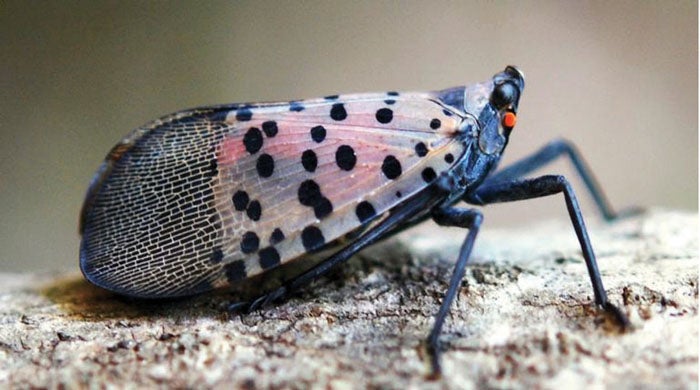Cody Craddock: Be on the lookout for the spotted lanternfly
Published 12:00 am Saturday, August 6, 2022

- Spotted lanternfly
By Cody Craddock
N.C. Cooperative Extension
A recent news release from the NCDA&CS notified the public that the pest spotted lanternfly has officially been detected in North Carolina. The news release comes after spotted lanternfly was detected in Forsyth County. The invasive pest was first detected in Pennsylvania in 2014 where its invasion has been closely monitored. You might recall in 2021 when it was detected in Hillsville, Virginia, less than 20 miles from the Virginia-North Carolina state line. Here’s what you need to know about spotted lanternfly.
What’s the importance of this pest?
Spotted lanternfly doesn’t just attack our plants, it attacks the economy. They attack more than 100 species of plants. Vineyards, orchards, plant nurseries and timberland is at risk for the most damage from spotted lanternfly, but other plant industries may be affected as well. The Pennsylvania Department of Agriculture estimates that if no intervention took place, the pest would have cost the industry $324 million and nearly 3,000 jobs in the state which is ground zero for the pest’s invasion. The spotted lanternfly sucks fluid from the stems of the host plant which stresses the plant, sometimes leading to its death. In vineyards where this pest can be most destructive, there have been reports of 90% crop losses and they can even kill grapevines. There are ongoing research efforts to learn more about the pest’s behavior, biology, host plants and more.
How can I identify spotted lanternfly if I think I have found one?
The pest can be identified in one of three stages (eggs, nymphs and adults). There are some look-a-likes, so if you’re unsure the NCDA&CS is asking you submit suspected spotted lanternfly sightings to them using their online form. You can also contact your local Cooperative Extension office who can help.
During the egg stage, spotted lanternfly looks like dried mud, and freshly laid eggs can have a shine to them. Each egg mass will contain about 30-50 eggs and will measure about 1½ inch by ½ inch. Eggs would be noticeable late summer or fall to spring. The eggs are laid by adults (see below for identification) and overwinter on the surface which they are laid. Sometimes they are laid on man-made objects like cars which allows the pest to be transported.
After the eggs have overwintered, the eggs will hatch in the spring to early summer. These eggs will hatch into nymphs which are easily distinguished with their unique markings. They may look slightly different at certain times of the year due to their different instar stages. In stages 1-3, they are black with white dots. In the fourth stage, they become red with black lines and white dots. Reports also state that the nymphs jump to avoid danger, which could be an indicator if you see them.
The adult spotted lanternfly has reportedly been mistaken for moths, so the next time you see a moth take another look! Adults are distinguished by their gray/brown forewings that have black dots. Hind wings will have red and black patches with splotches of white and hidden beneath front wings when at rest. In the adult stage, they feed on plants, mate and lay eggs. Adults use their mouthparts to suck fluids from the leaves of host plants. They then secrete a substance called honeydew which attracts other nuisance species like yellow-jackets and wasps. Honeydew also facilitates the growth of sooty mold. The adult stage likely occurs in N.C. from June through November.
What can I do to reduce the spread of spotted lanternfly?
Heavily infested states like Pennsylvania have quarantines in place that residents and business owners must follow. The quarantine aims to reduce the movement of the pest on man-made objects by regulating the movement of certain objects that could possibly migrate the pest.
The movement of spotted lanternfly is usually done unknowingly. It can be spread by transporting plant material like firewood or on the sides of outdoor vehicles or equipment, like RVs and lawn mowers. Therefore, if you should “look before you leave” to make sure no spotted lanternfly is present at any of its life stages. You should also be careful when purchasing firewood or other plant material (live or dead). Inspect the plant material to ensure no spotted lanternflies are hitching a ride. If you burn firewood, you should source firewood within 50 miles of where it will be transported. If you must transport the firewood further than 50 miles, purchase heat-treated firewood. Other man-made items like barrels can harbor the pest, so in general when transporting items check for spotted lanternfly.
I think I’ve found Spotted lanternfly at my house or farm. What next?
If you believe you have found spotted lanternfly, report it to the NCDA using its online reporting system at ncagr.gov/slf. The NCDA&CS will promptly reply to your submission and may reach out for additional details. You can also contact your local Cooperative Extension office.
Cody Craddock is an agent with the Rowan County Extension.




